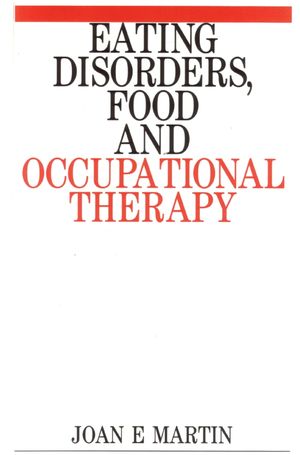Eating Disorders, Food and Occupational TherapyISBN: 978-1-86156-105-3
Paperback
278 pages
December 1998
 This is a Print-on-Demand title. It will be printed specifically to fill your order. Please allow an additional 10-15 days delivery time. The book is not returnable.
|
||||||
1. Anorexia Nervosa - History. anorexia Nervosa, The Condition. Classification of Anorexia Nervosa. Dsm-iv diagnostic Criteria for Anorexia Nervosa. Differential Diagnosis.
2. epidemiology - Minority Groups. Children. Older Women. Males. Sport, Exercise and Dance Groups. Anorexia Nervosa in Twins.
3. Aetiology - Familial predispositon. Anorectic Mothers. Personality. Socio-cultural Influences. sexual Abuse. Zinc Deficiency.
4. Clinical Features - Secret and Denial. psychopathology. Stealing. Body Image Disturbances. Exercise. Sleep Patterns. academic Work. The Anorectic Male.
5. Treatments Used in Anorexia Nervosa - in-patient Status. Medical Management of Anorexia Nervosa, Naso-gastic and intravenous Feeding, Pharmacotherapy. Nutritional Management. Behavioural management. Psychodynamic Approaches, Family Therapy, Marital Therapy, cognitive-behavioural Therapy, Individual Psychotherapy, Group Therapy. out-patient Status. Future Planning.
6. Risk Factors and Outcomes - Risk factors, Cultural Risk Factors, Family Risk Factors, Individual Risk Factors. prevention. Complications of Anorexia Nervosa. Course and Outcome. Poor prognostic Indicators. Good Prognostic Indicators. Mortality.
Part II Bulimia nervosa, AN Overview.
7. Bulimia Nervosa - History. Bulimia Nervosa - The condition. Classification of Bulimia Nervosa. Dsm-iv Diagnostic Criteria for bulimia Nervosa. Differential Diagnosis.
8. Epidemiology - College Populations. community, Minority Groups. Males, Familly and Twin Studies.
9. Aetiology - socio-cultural Influences. Familial Variables. Relationships. Food as an aetiological Factor. Compulsive Eating and an Aetiology Factor. Compulsive eating and a Felling of Failure. Risk Factors for Bulimia Nervosa.
10. Clinical features - Binge Eating. Vomiting. Laxatives. Chewing and Spitting of Food. multi-impulsivity. Addictive Behaviours - Alcohol, Drugs, Smoking. Combination of Methods. Psychopathology. Seasonal Affective Disorder (s. a. d.). co-morbidity.
11. Bause in Bulimia Nervosa - Sexual Abuse, Abuse and psychopathology. Abuse and The Family. Physical Abuse. Crime Victimization. abuse in Males.
12. Treatments - Pharmacotherapy. Cognitive-behavioural therapy. Behaviour Therapy. Psychodynamic Approaches, Group Therapy, interpersonal Psychotherapy. Combination of Treatment Approaches. Self-directed manuals. Psycho-educational Treatment. Family Therapy. Light Therapy. Drop outs. Methodological Limitations.
13. Complications and Outcomes - Outcomes and predictors. Prognostic Indicators. The Chronic Patient. Methodological Issues.
Part III A Socio-cultural Perspective ON Food AND Eating Disorders.
14. A socio-cultural Perspective on Food - The Meaning and Role of Food. Gender issues. Class. Cultural Influences. Religion.
15. Socio-cultural and Feminist perspectives on Eating Disorders - A Socio-cultural Perspective. A Feminist perspective.
16. Eating Disorders in Other Cultures - Body Image - Fat Phobia. Af



